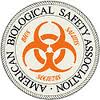
NanoEnvironment Research
Toxic Substances: OECD Nanotechnology Conference Considers Potential
Environmental Benefits, Dangers

Nanotechnology holds promise for innovative environmental applications, but
policymakers need to ensure that human health and the environment are protected, said speakers at a July 15-17, 2009 conference at the Organization for Economic Cooperation and Development.
More>> |
Contaminated Site Remediation: Are Nanomaterials the Answer? First Map of Global
Nanoremediation Sites Available Online

A new review article appearing in Environmental Health Perspectives (EHP) co-
authored by Dr. Todd Kuiken, a research associate for the Project on Emerging Nanotechnologies (PEN), focuses on the use of nanomaterials for environmental cleanup.More>> |
Novel approach estimates nanoparticles in environment

Without knowing how much of an industrial chemical is being produced, it is almost impossible for scientists to determine if it poses any threat to the environment or human health.
Civil engineers at Duke University believe they have come up with a novel way of estimating how much of one such material - titanium dioxide - is being generated, laying the groundwork for future studies to assess any possible risks.
More>> |
Examining the Relationship Between Carbon Nanotubes and the Environment

Carbon nanotubes have made a meteoric career in the past 15 years, even if their applications are still limited. Recent research results show that - apart from their favorable mechanical and electrical properties - they also have disadvantageous characteristics. One aspect which has rarely been considered so far is now addressed by researchers of the research center Forschungszentrum Dresden-Rossendorf. More>> |
The perils of pre-emptive (nanotech) regulation

Nature Nanotechnology -- So far, nanotechnology - at least in the United States - remains largely unregulated. However, in December 2006, Berkeley became the first American city to regulate nanotechnology when it amended its hazardous-material reporting requirements to encompass nanoparticles. Up until that point, scientists at the relevant government agencies took the view that with some tinkering, existing federal law is sufficient to manage any potential risk posed by nanoparticles. More>> |
What drives public acceptance of nanotechnology?

Nature Nanotechnology -- How do the risks and benefits of nanotechnology, as viewed by the public, compare with
those associated with other technologies such as genetically modified organisms, stem cells, biotechnology and nuclear power? And when deciding to use a specific nanotechnology product, will consumers consider the risks, the benefits, or both? We report the first large-scale empirical analyses of these questions." . More>> |
Occupational Safety & Health Research |
|
Do occupational exposures to engineered nanoparticles pose an unintended risk
of adverse health effects?
Concerns have been raised about whether workers exposed to engineered nanoparticles
are at increased risk of adverse health effects.
 Current Intelligence Bulletin 60
Interim Guidance for Medical Screening and
Hazard Surveillance for Workers Potentially
Exposed to Engineered Nanoparticles Current Intelligence Bulletin 60
Interim Guidance for Medical Screening and
Hazard Surveillance for Workers Potentially
Exposed to Engineered Nanoparticles
The purpose of this document from the National Institute
for Occupational Safety and Health (NIOSH) is to provide interim
guidance about whether specific medical screening. induding performing medical
tests on asymptomatic workers, is appropriate for these workers More>>
 Biosafety, Occupational Health and Nanotechnology
Biosafety, Occupational Health and Nanotechnology
Vladimir Murashov and John Howard
National Institute for Occupational Safety and Health, Washington, DC
Applied Biosafety Vol. 12, No. 3, 2007
"This article reviews what is currently know about potential health risks to workers from exposer to engineered nano particles, as well as the best methods to control those risks, in order to insure that their use in the laboratory and industry conforms to the best principles of occupational health and biosfety." More>>
|







 Current Intelligence Bulletin 60
Interim Guidance for Medical Screening and
Hazard Surveillance for Workers Potentially
Exposed to Engineered Nanoparticles
Current Intelligence Bulletin 60
Interim Guidance for Medical Screening and
Hazard Surveillance for Workers Potentially
Exposed to Engineered Nanoparticles Biosafety, Occupational Health and Nanotechnology
Biosafety, Occupational Health and Nanotechnology